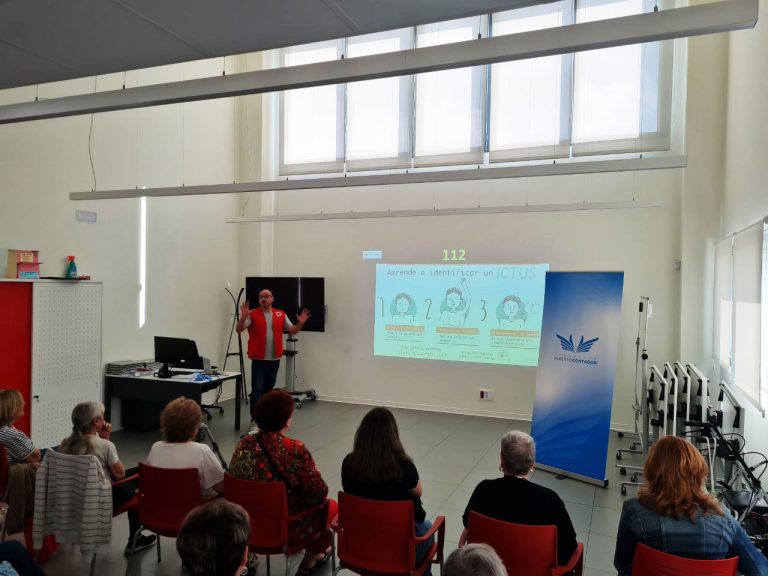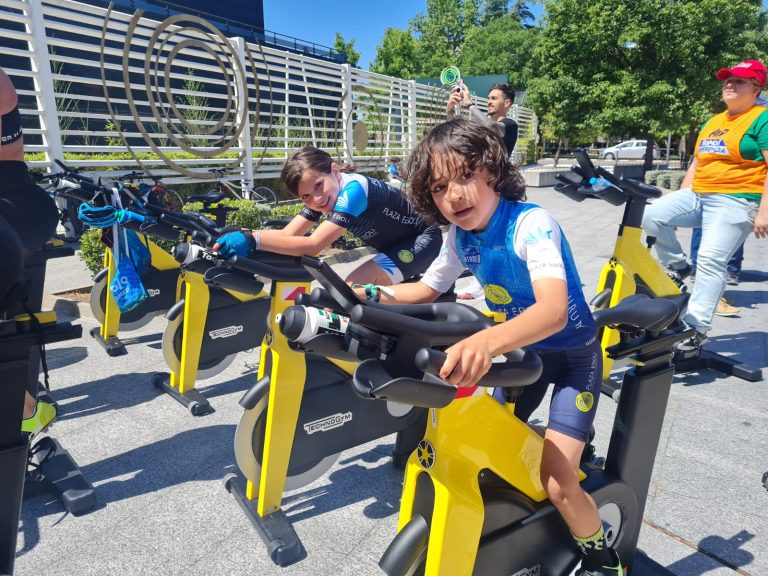The Alberto Contador Foundation finances a research project at the Stroke Unit of the Ramón y Cajal University Hospital: alarming increase in strokes in young people under 56 years of age

- There are 120,000 strokes a year in Spain, being the 1st cause of death in women and the 2nd cause of dementia after Alzheimer’s disease.
- The Stroke Unit is a national benchmark and has treated more than 5,000 patients in collaboration with other hospital services.
- In 2014 it treated 800 patients, a high percentage of whom were under 56 years of age, so it is essential to know the risk factors and symptoms to achieve an acceptable recovery.
The Fundación Alberto Contador has reached an agreement with the Foundation for Biomedical Research of the Ramón y Cajal University Hospital to fund a project in the Stroke Unit. The project, entitled “Incidence of stroke in young people treated in a Stroke Unit” is directed by Dr. Jaime Masjuan, Head of the Neurology Service and one of the specialists who treated Alberto Contador when he suffered from this disease. It also has the collaboration of the neurologist Javier González from the same department.
Alarming increase in young people
The research has three basic objectives; firstly, to analyse the vascular risk profile in stroke patients under 56 years of age admitted to the Ramón y Cajal Stroke Unit, taking into account its causes. To analyse the emergency care received by these patients and to disseminate the results of the study to the general population in order to raise awareness of the importance of this disease among young people – planned for mid-2015.
The project, which has a budget of 4,500 euros, will delve into the patients, of the 800 who were admitted with a stroke in 2014 to the hospital’s Neurology Department, who were under 56 years old when they suffered a stroke, as well as trying to find out the possible causes. The reason for this research is based on the alarming increase that this disease is having in young people and hence the interest in studying this age group in detail, taking into account the risk factors that characterise them – arterial hypertension, diabetes, dyslipidaemia, heart disease, smoking, harmful consumption of alcohol, overweight and stress, among others.
Dr. Jaime Masjuan points out that “not so long ago it was something extraordinary to have young patients admitted to a stroke unit. However, for some years now, it is rare that we do not have to attend to at least two young patients every week”. The impression the specialists have is that most of these patients are unaware of the existence of this disease, and therefore do not know why it occurs. “It is a cruel disease because of its sudden onset, which gives little time for response, and because of the after-effects it can leave. That is why we have decided to try to carry out this research in collaboration with the Alberto Contador Foundation, which is helping us so much in the dissemination of this disease”. 
120,000 strokes a year in Spain
According to data from the Spanish Society of Neurology, 120,000 strokes occur every year in Spain and around 12,000 in the Community of Madrid. Strokes are the leading cause of death in Spanish women and the second cause overall. They are also the second cause of dementia after Alzheimer’s disease and the leading cause of adult dependency. Their social and health care costs are very high, with an estimated 30,000 euros for each stroke during the first year. These costs also increase when those affected are people of working age. The slightest sequelae, such as difficulty in writing, reading, using a computer or operating a tool, means that they are forced to leave or have to change their job, which in turn brings with it significant problems in their social and family environment.
In this sense, Dr. Masjuan stresses the importance of the general population knowing how to recognise the symptoms of a stroke in its early stages. The sudden onset of loss of strength in an arm, twisting of the mouth or speech problems are highly suggestive of a stroke and we must immediately activate the emergency services to assess the patient and transfer him or her to a hospital with a stroke unit. Early attention in the first hours of evolution, by a team of specialised professionals and with the appropriate treatment, improves survival and reduces the after-effects. Before these early treatments, one third of patients died, one third were left in wheelchairs and only one third made a significant recovery. Today, up to 55% of patients make an acceptable recovery and mortality is 10%.
National reference unit
The Stroke Unit of the Ramón y Cajal University Hospital has attended more than 5,000 patients since its creation in 2006. Each year it attends to 800 patients, with collaboration with other hospital services such as Neurosurgery, Neuroradiology, Rehabilitation, Emergency, Cardiology, Vascular Surgery and Critical Care Units being essential for its operation. It also has a nursing staff specialised in stroke patients, playing a key role in the prognosis and care of stroke patients.
Alberto Contador Foundation
The Alberto Contador Foundation’s main objectives are the fight against stroke and the promotion, development and dissemination of cycling. Contador suffered a stroke due to a congenital brain cavernoma in 2002. He was treated at the Ramón y Cajal Hospital and the brain cavernoma was removed. For this reason, the non-profit foundation named after him was set up. “We are very happy to have reached this agreement with the hospital and to carry out the study together with them. The stroke has been the event that has marked my life, overcoming it was my greatest achievement and we hope that with this type of action we can help more people who suffer from this disease to reach their goal and overcome it,” said Contador.




